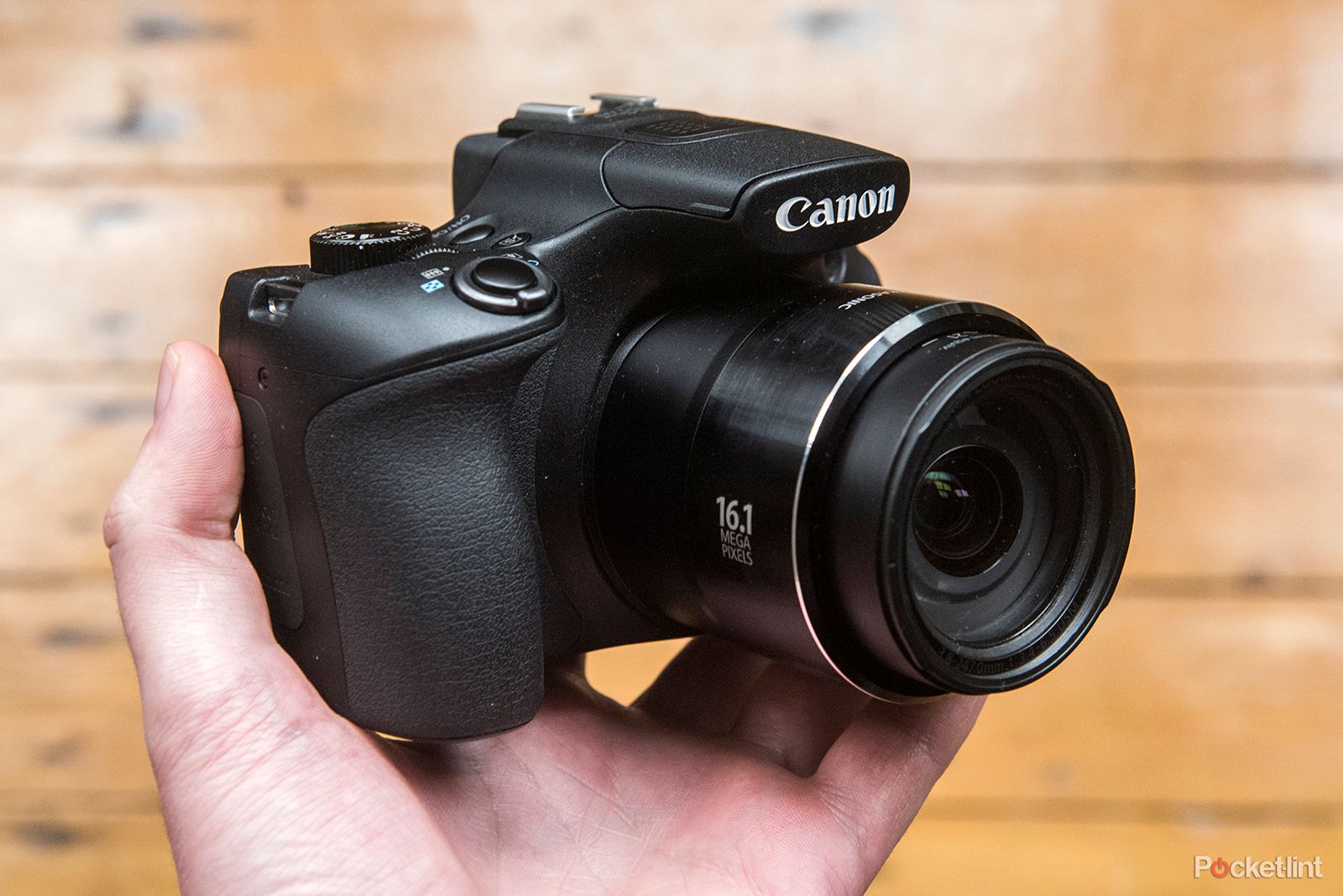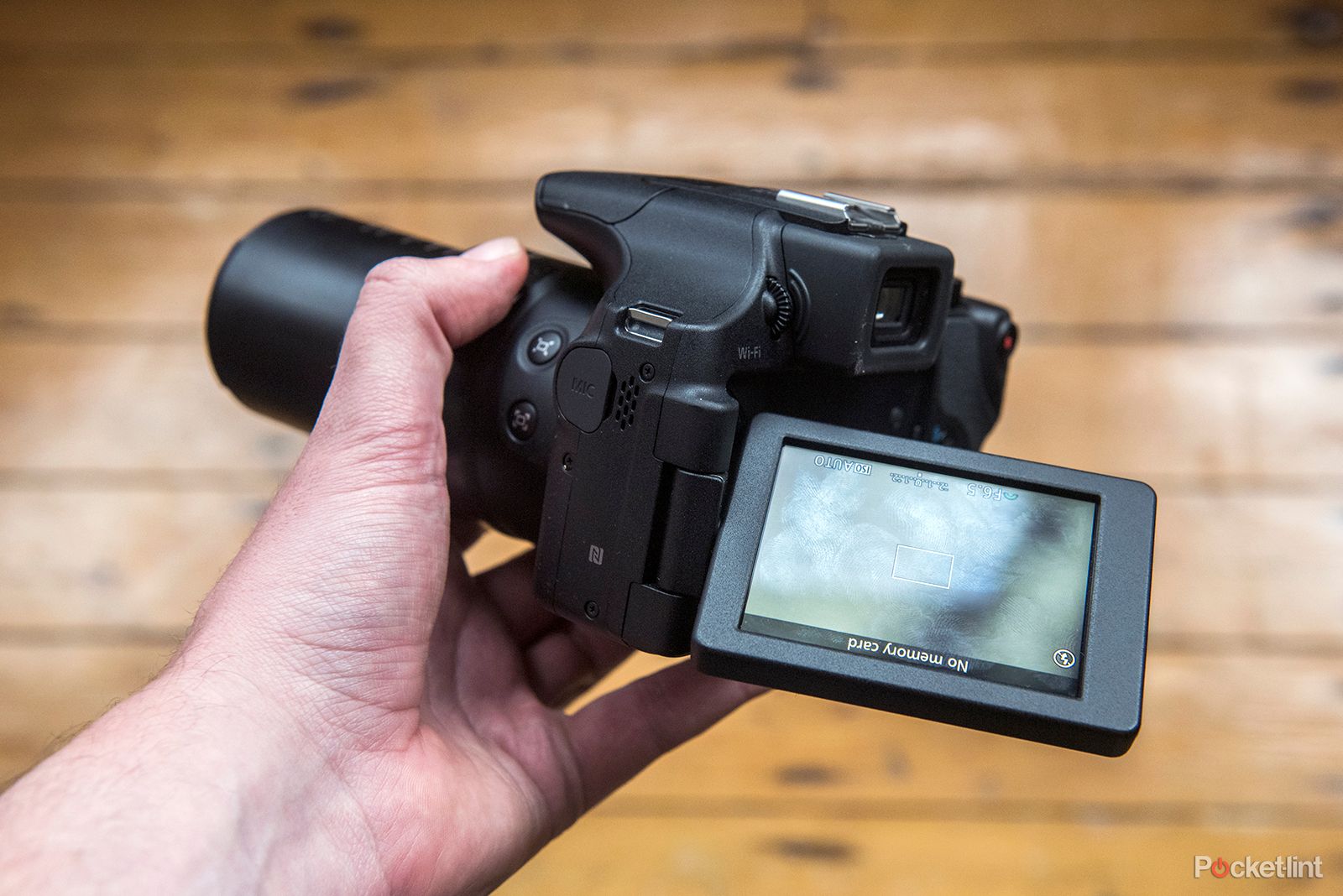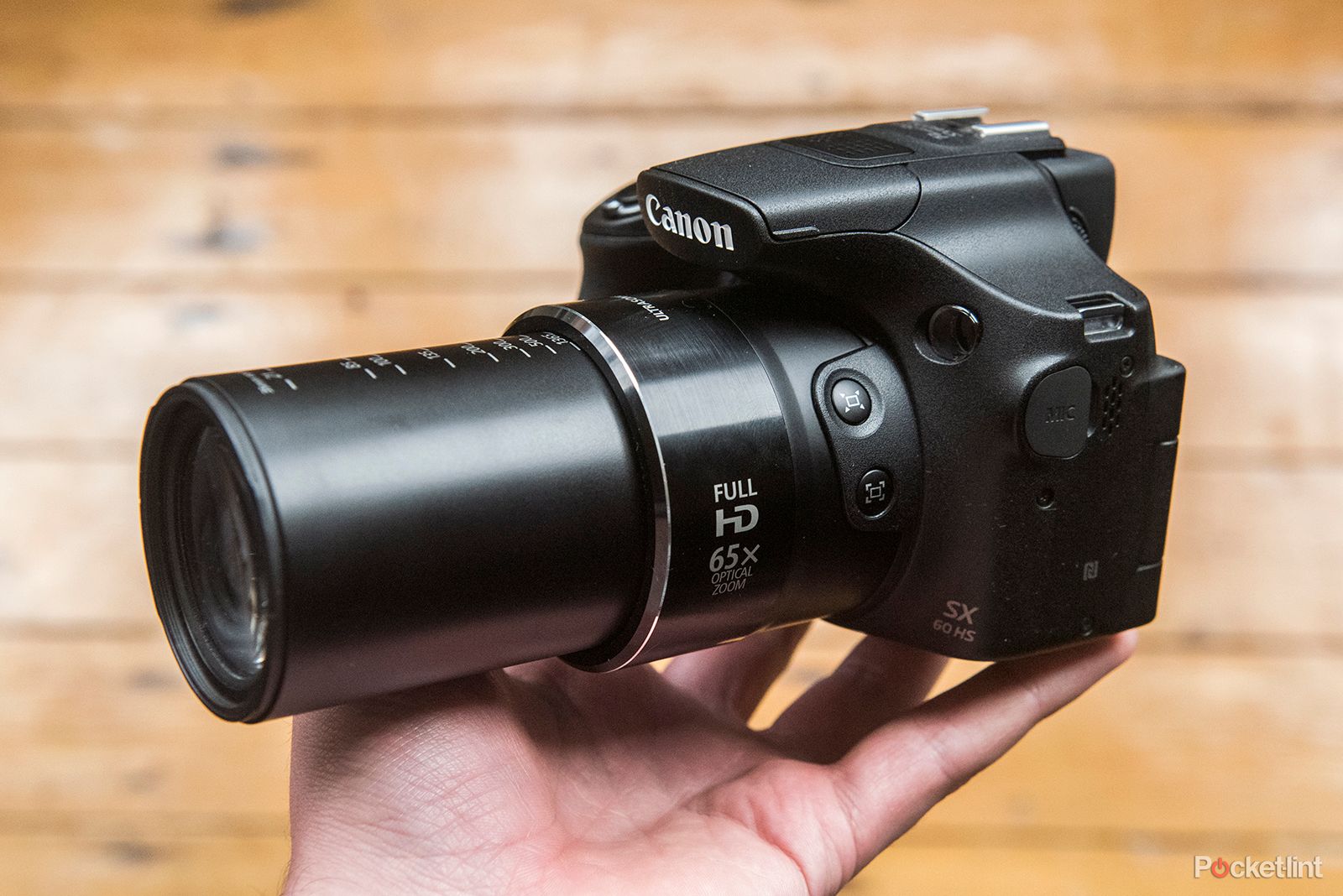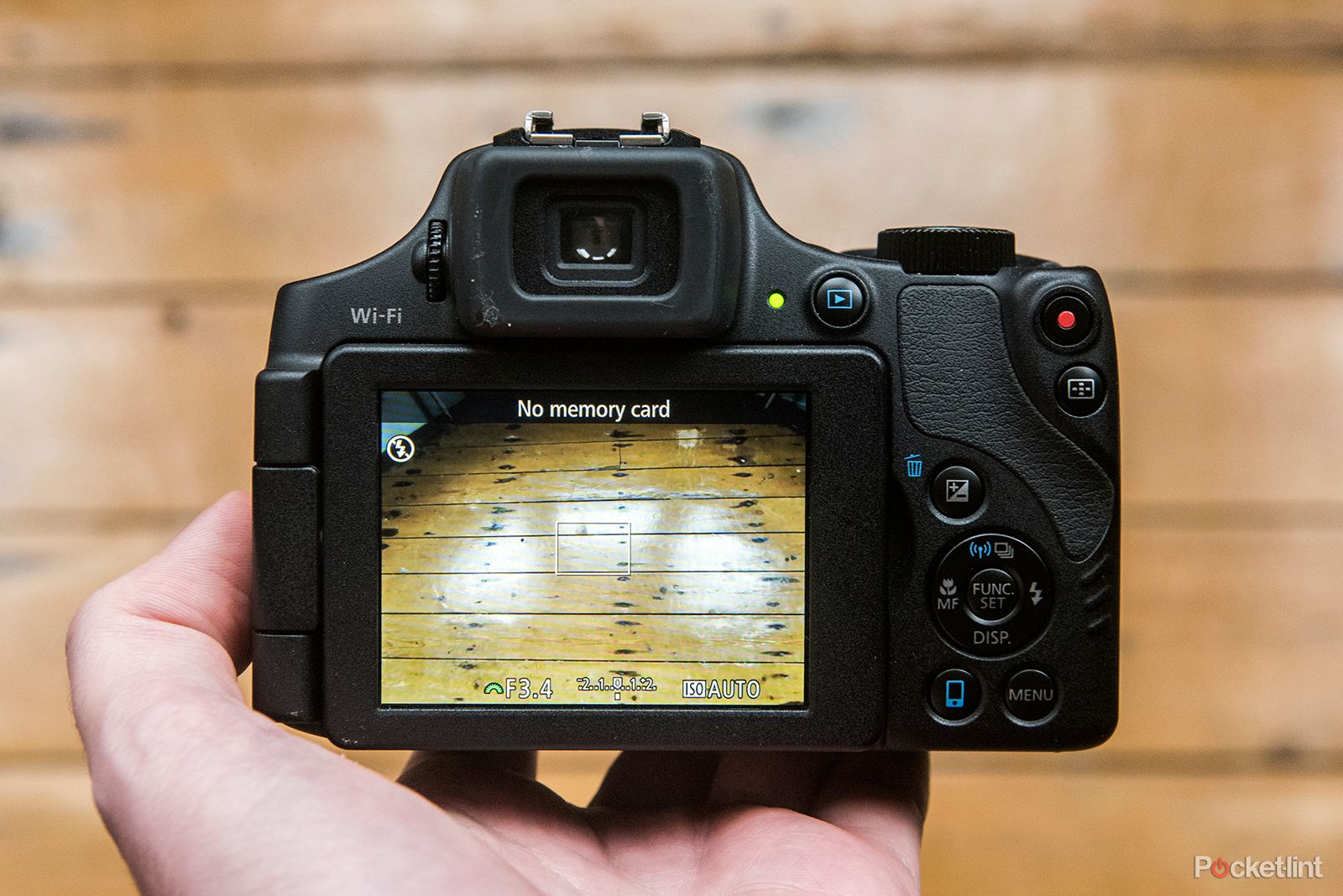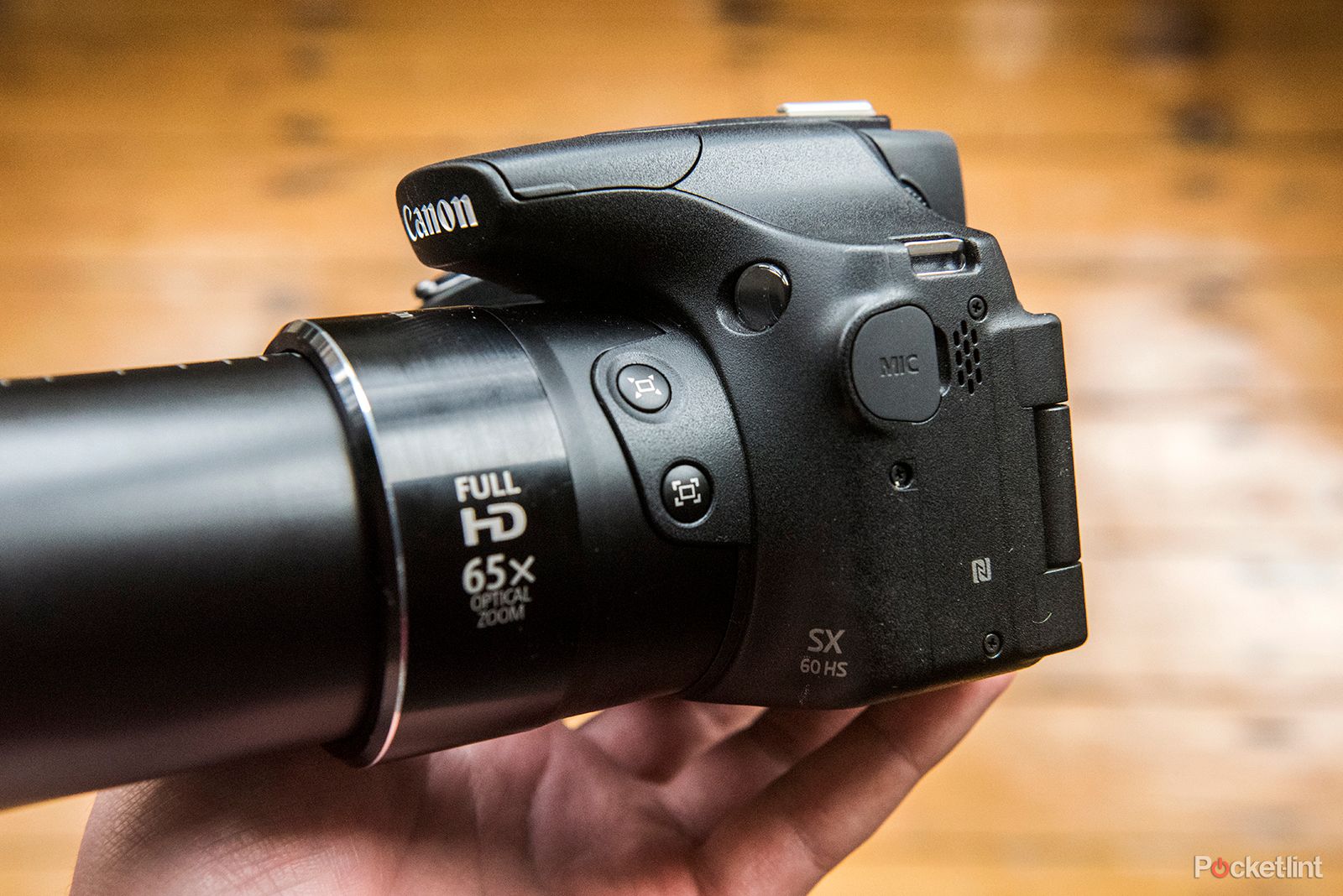The superzoom market keeps on growing, quite literally, with the latest Canon PowerShot SX60 HS boasting a gigantic 65x optical zoom lens. That's far more heavyweight than any competitor on the market, so if it's zoom you want, it's zoom you get.
Our quick take
There's a lot to admire about the Canon PowerShot SX60 HS. It takes what has always been successful about this companies superzooms and pushes it up a notch.
But pushes it a notch too far in our opinion. The 65x optical zoom is all about big numbers rather than the best results at its full extension, but use the lens sweet spots and you'll get some fantastic results.
The other main criticism is less about the SX60 HS itself - despite not being giant leaps ahead of its SX50 HS predecessor - but more about the way the market has started to bend towards yet higher-spec models such as the Panasonic Lumix FZ1000.
The PowerShot SX60 HS is all about expectation; it does a job very well, so long as you're not expecting it to be a £400 DSLR plus mega-lens stand-in. When it comes to superzooms Canon has always been king, and with few competitors offering genuine rivals at this price point the SX60 HS will maintain the Japanese maker's reign.
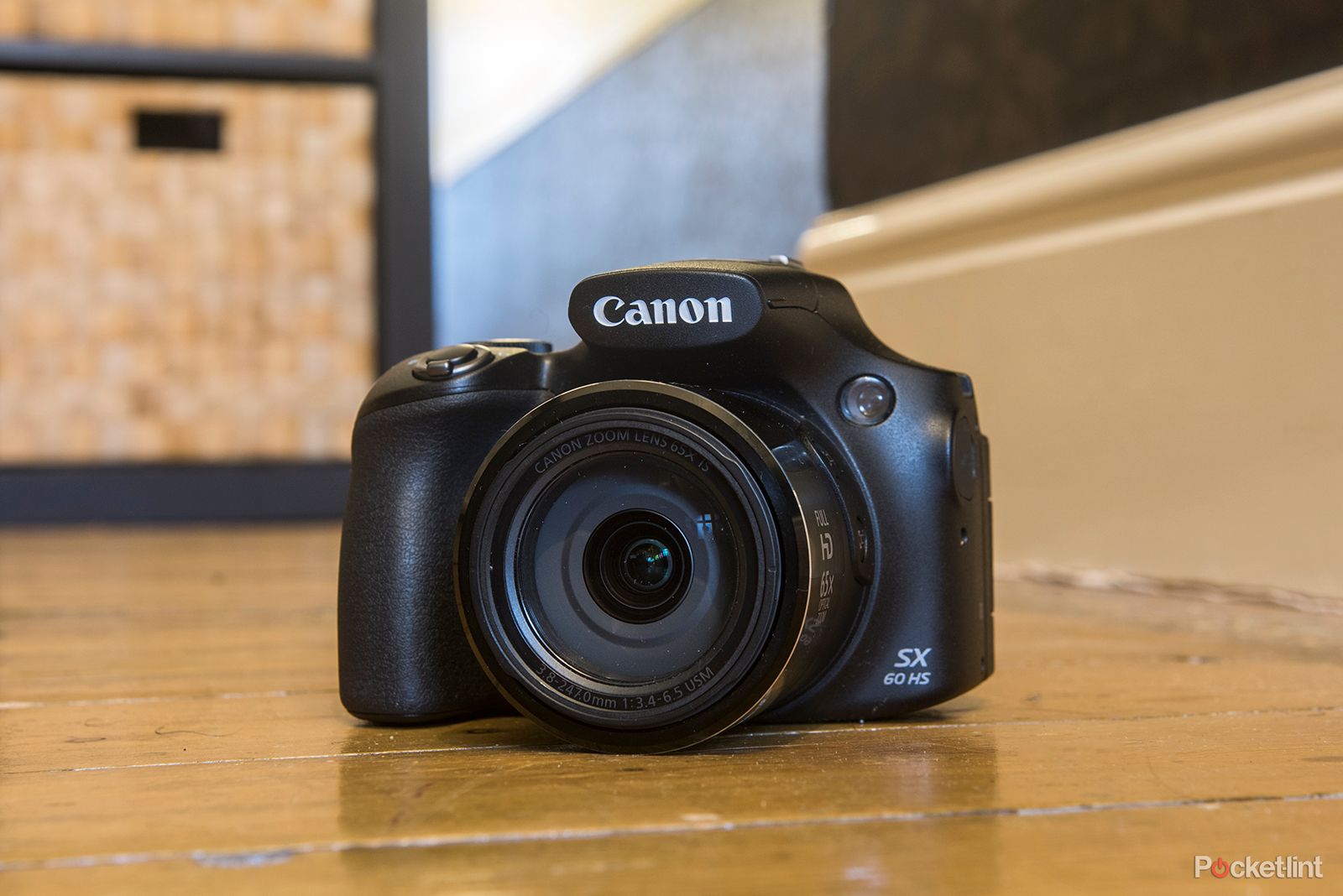
Canon PowerShot SX60 HS - 4.0 / 5
| FOR | AGAINST |
|---|---|
|
|
Canon PowerShot SX60 HS
But is there any benefit to having such a wide-ranging 21-1365mm equivalent focal length in a body of this size? It means wide-angle group shots and those fleeting, far-away subjects can all be snapped from the one camera, but the handling at the maximum zoom extension is a tricky balance.
Stepping in to replace its SX50 HS predecessor, a camera that we loved for what it was, the PowerShot SX60 HS has big boots to fill. But in among the recent more advanced (and pricier) superzooms are this Canon's aspirations over ambitious?
Design
If you want a big zoom then you've got to settle on a bigger body than a typical compact camera would offer. The SX60 HS is nowhere near DSLR proportions, but its epic zoom also means it's not a pocketable camera. But then you probably knew that already.
It's a touch bigger and heavier than its SX50 predecessor, but considering the lens stowed away within its body, the 127.6 x 92.6 x 114.3mm dimensions by no means make the SX60 HS huge. Besides, it's comfortable to hold, with a chunky grip and enough distance from the lens barrel so your fingers won't feel squashed in the gap.
Switch the camera on via the power button up top and the lens will protrude a little from the barrel, but when extending it via the zoom toggle around the shutter button - there's no twist-zoom lens barrel here, nor secondary zoom control on the lens - the overall length gives you an idea of how much reach this lens has. There are cool focal length markings on top of the barrel too, which are handy to know where you're at.
In addition there are stacks of desirable features on board the SX60 HS, including a 3-inch, 921k-dot LCD screen which is mounted on a tilt-angle bracket. When using the screen to frame a shot you won't always want it at eye level, sometimes just for stability purposes, so being able to adjust the screen into all manner of positions is certainly a helping hand.
Being a superzoom, or what some call a bridge camera, also means that other key feature: a built-in electronic viewfinder. Despite a significant resolution increase in this department between SX50 to SX60 models, the finder still isn't quite exceptional, as to be expected at this £400 price point.
There's no eye-level finder, for example, so you'll have to hit the downward d-pad Display button three times to fire-up the finder (or shut the screen protective side outward), and when active the 0.17in size is a little tunnel-like to the eye. The 922k-dot resolution at this magnified scale is reasonable, though, and certainly an improvement compared to the 2012 model, but the main problem is lag during any motion. However, saying that, the finder is a great kind of support beam when it comes to taking steady shots at longer focal lengths.
So whether you're looking for point-and-shoot simplicity, or need more detailed manual controls, the SX60 HS offers the full spectrum in a solid build. However, with the relatively limited aperture range there's only so much control the lens offers. It's on par or better than its near competitors, but with models such as the Panasonic Lumix FZ200 or top-tier FZ1000 now on the market, there's a lot to contemplate.
Big zoom
Our feelings about the SX60 HS's zoom are much the same as with its predecessor, in that it performs well until pushed towards its upper limits. That maximum 1365mm equivalent is excessive really, introducing issues with being able to hand-hold the frame steady and, from what we've found, occasional focus issues too.
Over use we've shied away from using the maximum zoom as it's not really up to the task. Not that it doesn't work, but really the 65x zoom is one of those show-off selling points that sounds good in big number terms, but has limited practicality. We've had plenty of blurry shots and mis-focuses.
But that's to focus on the extremes. Go a little more casual on the zoom and the SX60 HS offers definite highs. First up the 21mm equivalent wide-angle is very wide indeed, which is ideal for group shots and landscapes. You're not going to get biting sharpness towards the edges, but at the right scale of use that won't be a major problem.
Second, the close-up shooting ability of macro mode works very well too, making it possible to focus on a subject when it's more-or-less touching the lens at its widest-angle setting.
And let's not forget Canon's lens-based image stabilisation system which continues to operate to a very high standard, counteracting handshake and assisting in steadying compositions. However, there's only so much it can counteract at those longer focal lengths, so being a monopod master or resting the camera on a surface at longer zooms will be a big help.
Performance
Autofocus handles well in good light, but be sure to keep an eye on the shutter speed and how fast your subject is moving too, as these kind of details are pronounced at longer zoom settings.
Outside of full auto the SX60 only offers a single area autofocus mode, with a dedicated focus area button just as in the previous model, which makes light work of moving the point around the screen. However, there's no touchscreen control, so you're limited to using the rear d-pad to move it around.
By the time you've extended to a 1000mm equivalent - which will make those far-away subjects look giant in the frame - the autofocus isn't quite so hot. It has to hunt a little more and is somewhat slower overall, which is typical of such a system. Mix that with poor lighting conditions and the experience can be limiting overall, so be wary of what you're most likely to be photographing and in what kind of conditions before concluding whether this is the camera for you or not.
Another cool feature, which was also present in the earlier SX50 HS model, are the buttons to the side of the lens used to "pull back" the focal length for quick compositional assistance. Let's say you're zoomed right in, making it can tricky to locate the subject you know is there - strike that button, realign things and it's a sensible aid to point you in the right direction. We rather like this helpful little feature.
Overall the big zoom in the PowerShot SX60 HS performs well until you push it to its limits, whereafter it becomes a bit over the top. Which makes us question the necessity for a 65x optical zoom lens in the first place, as we feel its predecessor was touching the limits as it was, this goes a step beyond.
Image quality
Under the hood the SX60 HS sports a 16.1-megapixel sensor, which is a 4MP increase in resolution compared to the earlier SX50 HS. It seems the SX60 HS is all about big numbers, because while that might sound good on paper, with a sensor of this scale and a lens already working extra hard, it doesn't guarantee better image quality than the last generation.
And yet it doesn't mean it's worse either, so let's not paint a bad picture. Given the two year gap between the two products, the image quality is at a similar level, with the SX60 HS producing impressive images all things considered.
Canon PowerShot SX60 HS review - sample at ISO 1600 - click for full size JPEG crop
But that new sensor does mean a condensed sensitivity range. The PowerShot SX60 offers ISO 100-3200, the higher numbers coming into use when the light dips, but producing less detailed and more grainy looking images due to processing differences.
These high ISO settings are important for superzoom cameras for a number of reasons. The SX60's limited f/6.5 maximum aperture at its longer focal lengths means less light can reach the sensor and therefore, in many situations, a higher ISO setting will need to be used when shooting handheld.
Those longer focal lengths also introduces greater sensitivity from physical movement, and the general rule of thumb is that a shutter speed should be equal that of the equivalent focal length - i.e. 50mm at 1/50th sec, 1000mm at 1/1000th sec and so on - in order to maintain optimum sharpness. But at the 1365mm setting, shooting at 1/1500th of a second at the maximum f/6.5 aperture even in daylight isn't always going to be available.
Canon PowerShot SX60 HS review - sample at ISO 1600 - click for full size JPEG crop
Fortunately even four-figure ISO sensitivity settings produce rather good results. We've been snapping Christmas tree decorations at ISO 1600 with success, and although there's some colour noise present - subtle purple blotches visible in the shot - it's a good overall performance. A step up to ISO 3200, however, and we've been struggling to get sharp shots on account of image processing.
Dial things down and the lower ISO settings result in crisp and clear shots. The ISO 100-400 settings resolve a good amount of detail without levels of image noise compromising the overall quality. Even a long-zoom ISO 640 shot of a street sign in London shows off ample detail in brickwork, even if sharpness at 100 per cent isn't spectacular.
In addition to JPEG files, it's also possible to shoot raw, which is like the digital negative that can be manipulated after shooting to, among other things, adjust the colour balance, pull back some shadow or highlight detail, and so forth. It's rare to find such a feature at this level, and despite limits to this sensor size's dynamic range and therefore level of adjustment possible, it's good to have it on the table.
Canon PowerShot SX60 HS review - sample at ISO 640 - click for full size JPEG crop
We spotted less chromatic aberrations - those red, blue and purple "edges", also known as colour fringes - than the earlier SX50 produced, and although edge softness is prevalent due to that wide-reaching lens, we don't think it's a big issue for images at a smaller sharable scale.
Despite our critical comments here, the SX50's image quality is top-drawer for its superzoom category. So long as your expectations are balanced: this isn't a DSLR camera, so don't think about it in such terms, don't go over the top on the zoom front, and the SX60 HS delivers aplenty.
In the same breath it's also now outsmarted by larger sensor, smaller zoom, broader aperture models, from the Panasonic Lumix FZ1000, to the Sony Cyber-shot RX10. They're a lot more cash, but products to keep in mind, as Canon is one of the last manufacturers to keep at the more classic superzoom game.
Brucey Bonus
Solid design, decent quality from much of the zoom, but that's not all. The Canon CameraWindow app (for iOS and Android) provides a solid way of viewing images from camera on your smart device and sharing them to social sites, or even performing remote shooting functions.
A lot of camera manufacturers still haven't quite got the simplicity of Wi-Fi connectivity to work, and although we've fallen into some connectivity glitches when using the SX60 HS, the overall package is decent.
There's also Full HD movie recording, now with the option of 50/60 frames per second rather than just the 24fps option of the SX50. Continuous autofocus slowly slides between focus depths, only occasionally hunting, and results are smooth assuming you avoid jerky or fast movements, as that can introduce a skew/wobble to capture.

